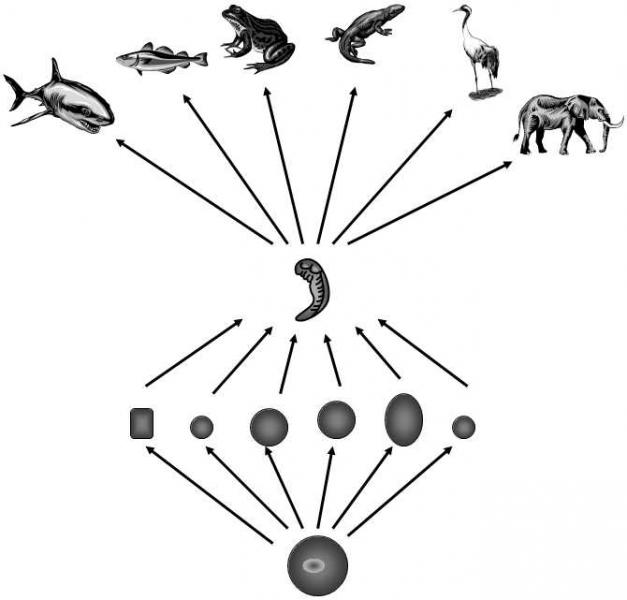XII.7.3.1 The embryogenetic stage, in which the members of the same animal phylum resemble each other most, is called the phylotypic stage; earlier and later stages in various species of the same phylum can differ substantially
A great many contemporary embryologists are of the opinion that, in embryo development, a certain stage exists for the individual animal phyla in which all the representatives of a certain phylum are most similar.This is called the phylotypic stage.The phylotypic stage in vertebrates is the pharyngula stage, while in arthropods this is the segmented germ-band stage (Fig. XII.10).According to the original concepts, the phylotypic stage corresponds to the developmental stage in which the basic body structure is formed, a bauplan, which is characteristic for the given animal phylum.

Fig. XII.10 Passage of the embryo through the phylotype stage. The egg cell and the initial developmental stages differ substantially in various organisms and their morphology and developmental mechanisms tend to reflect the conditions in their environment, the amount of substances supplied and possibly the manner of nutrition of an embryo, rather than phylogenetic relationships. However, at a certain stage in their development, embryos pass through a phylotype stage, i.e. a stage that is more or less common for the members of the given phylum. In vertebrates, this is the pharyngula stage. The developmental pathways and thus also the morphologies of the individual species part again after passage through the phylotype stage
The concept of the existence of a uniform phylotypic stage is probably somewhat simplified.Numerous heterochronies occur in the development of the individual species of organisms; i.e. the individual organ systems develop at different rates in various species (Palumbi 1997).It thus follows that the members of two taxa of a single phylogenetic line can be most similar at a certain stage in development, while the members of two other taxa are most similar in a different stage (Richardson et al. 1997; Richardson 1995).
